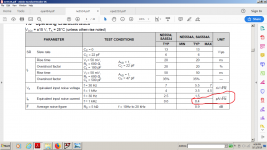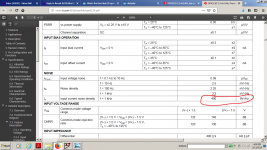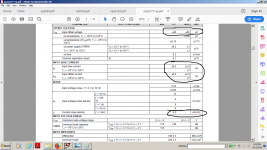Quoting from page 10 of the June 1992 rev-A datasheet where this might have started:
First, multiple bypassing is recommended in any precision
application. A 1.0 µF-4.7 µF tantalum in parallel with 0.1 µF
ceramic bypass capacitors are sufficient in most applications.
When driving heavy loads a larger demand is placed on the supply
bypassing. In this case selective use of larger values of tantalum
capacitors and damping of their lead inductance with small
value (1.1 Ω to 4.7 Ω) carbon resistors can be an improvement.
The issue is damping the lead inductance of the larger electrolytic bypass capacitors when they are used with MLCCs, in order to prevent the parallel combination from becoming resonant. This is not the same as requiring power supply rail ESR for the amplifier itself!
FWIW, I'm using the AD797 on a 4 layer board with a relatively unbroken set of power planes driven by Analog ADP7142 and ADP7182 regulators as well as 3x Kemet C1206C105K5RACAUTO 1µF X7R bypass caps per rail (to keep the regulators stable) and this very low HF power supply impedance is not a problem whatsoever. I need no damping resistors because I use no electrolytics post-regulator, and the power planes have very low inductance because of their geometry. Therefore, there is no supply rail resonance caused by the MLCC bypasses that I require in order to make the regulators stable.
First, multiple bypassing is recommended in any precision
application. A 1.0 µF-4.7 µF tantalum in parallel with 0.1 µF
ceramic bypass capacitors are sufficient in most applications.
When driving heavy loads a larger demand is placed on the supply
bypassing. In this case selective use of larger values of tantalum
capacitors and damping of their lead inductance with small
value (1.1 Ω to 4.7 Ω) carbon resistors can be an improvement.
The issue is damping the lead inductance of the larger electrolytic bypass capacitors when they are used with MLCCs, in order to prevent the parallel combination from becoming resonant. This is not the same as requiring power supply rail ESR for the amplifier itself!
FWIW, I'm using the AD797 on a 4 layer board with a relatively unbroken set of power planes driven by Analog ADP7142 and ADP7182 regulators as well as 3x Kemet C1206C105K5RACAUTO 1µF X7R bypass caps per rail (to keep the regulators stable) and this very low HF power supply impedance is not a problem whatsoever. I need no damping resistors because I use no electrolytics post-regulator, and the power planes have very low inductance because of their geometry. Therefore, there is no supply rail resonance caused by the MLCC bypasses that I require in order to make the regulators stable.
Since you don’t understand the mechanism, your warning should be to avoid the bad practice of throwing lots of film caps at power rails.
I don't think so. The goal is not to require use of AD797 or guarantee compatibility with it.
If the issue is that a more or less linear oscillator is formed and phase shift in a filter cap is part of the tank circuit then maybe maybe phase shift and damping as we think of in linear circuit theory is the best way to think about the overall mechanism.
As an alternative solution for improved SQ, active regulators that have very low output Z at HF may be more likely to look a bit more on the inductive side, as seen by loads. So, they may turn out to work better with AD797, but I would be inclined to double check for stability rather than assume.
As far as most opamps go, they are fine with film caps, and they sound very good that way. In that case whether to use the caps or use an active regulator known to sound good with analog audio may be more a choice of economics. A solution that works reliably for its intended market as designed is all that is needed. Support for aftermarket opamp swapping is optional.
Last edited:
It sounds like i can solve this thing with just a virtual ground made with capacitors connected to the load ground and a bypass capacitor over v-v+
So what is the exact cause for this?
I have low esr capacitor banks supplying 3000v/us and 1200v/us op-amps (both VFB and CFB) and they don't show any instability because of that.
AD797 is a bit peculiar as opamps go. Low ESR electrolytics some distance away don't seem to bother it as much (perhaps because of their ladder network equivalency, or because of increasing lossines as frequency goes up).
Quoting numbers like 3000v/us may mean very different things depending on how it is measured. If trying stacked or extended foil construction film caps in parallel not bigger than maybe 10uf each gives a different experimental result with AD797 (or any other circuit) as compared to some other cap(s), then obviously something has to be different. If one wants to spend time figuring out and characterizing it, well, that's one way to spend time. If one has bigger fish to fry, so to speak, then one may wish to spend effort on something else.
Last edited:
lm6172 and tpa6120...i'm using them with 2x 330uf...1000uF panasonic fc in parallel and decoupled by 100nf ceramic cap in parallel with the electrolitics all next to the power pins(1cm away).Nothing worse happened so far.
I don't think so. The goal is not to require use of AD797 or guarantee compatibility with it.
If the issue is that a more or less linear oscillator is formed and phase shift in a filter cap is part of the tank circuit then maybe maybe phase shift and damping as we think of in linear circuit theory is the best way to think about the overall mechanism.
As an alternative solution for improved SQ, active regulators that have very low output Z at HF may be more likely to look a bit more on the inductive side, as seen by loads. So, they may turn out to work better with AD797, but I would be inclined to double check for stability rather than assume.
As far as most opamps go, they are fine with film caps, and they sound very good that way. In that case whether to use the caps or use an active regulator known to sound good with analog audio may be more a choice of economics. A solution that works reliably for its intended market as designed is all that is needed. Support for aftermarket opamp swapping is optional.
So much pointless text. Monte has it right above. Why don’t we just admit you’re wrong and move on.
So much pointless text.
I could say that about you much of the time. No point getting into an never ending internet forum argument though. I will stop here.
*They're binned differently for offset. And a few of them like the OPA2209 vs the OPA1602 are almost identical but not quite (different input BJT's in that case). So it's mostly true, with a few exceptions. 🙂
OPA211 is not binned for offset, its input offset voltage is laser trimmed. Also the OPA1611 and OPA211 have slightly different internal compensation. OPA211 favors capacitive load drive, while OPA1611 trades cap load drive for improved distortion performance.
OPA2209 used the original super beta BJTs developed on the process early on, OPA1602 did not. But the rest of the architecture is fairly close. The super beta BJTs have been VASTLY improved, which is why we released the OPA2210 recently (and the INA828, 821, 819, OPA202, etc...)
I thought that my "vastly" improved math knowledge was at peril so I used an online calculator to see if 400FA is the same with 04PA...still i can't see why the "vastly improved" super beta transistors can't offer more than the current noise offered by ne5534 in Jurassic era.OPA211The super beta BJTs have been VASTLY improved, which is why we released the OPA2210 recently
You could aim at the same offset figure with any transistor at that slew rate with just current bias cancellation techniques.
For some reason i can't see any advantage over the opa2277 in the audio range and i can't see any "super beta " being mentioned in the opa2277 datasheet although it has half the current noise and not too far offset and bias specs...
Attachments
Do you have QA/QC in your blood? 🙂
I do not know much about semi physics other than community college, but is there not a theoretical limit to current noise in a bjt? is there much process differences today, vs the 'ne5534 in Jurassic era" which is still alive and not dead because it obviously works at what it does or it would be EOL.
I am lead to believe that there is a trade off between voltage and current noise in a Si bjt, you can only optimize one over the other.
I might have had this discussion with Scott W. a while back, I do not think that they can get the jfets on a opamp to be as good as discretes, I think it has to do with die size, costs, just easier to do it outside for the few that need it done this way.
I do not know much about semi physics other than community college, but is there not a theoretical limit to current noise in a bjt? is there much process differences today, vs the 'ne5534 in Jurassic era" which is still alive and not dead because it obviously works at what it does or it would be EOL.
I am lead to believe that there is a trade off between voltage and current noise in a Si bjt, you can only optimize one over the other.
I might have had this discussion with Scott W. a while back, I do not think that they can get the jfets on a opamp to be as good as discretes, I think it has to do with die size, costs, just easier to do it outside for the few that need it done this way.
Last edited:
It's a funny story, but for almost 50 years, the NE5532 has been the best op amp for audio. Only the LM4562 has set new standards (after 50 years!). When it comes to noise, the NE5534 is still the best. TI and others can throw so many new developments on the market. That does not change the situation. Sure, there are op amp (by TI & Linear), which have better values in some points, but those are not suitable for audio.
A couple of points here, when comparing the OPA2210 to the OPA2209, the vastly improved portion comes from the offset voltage drift spec. 0.6 uV/C vs 3.0 uV/C max drift. For a precision op amp like the 2209 or 2210, the max column is really where you show your value. The definition of "typical" is pretty liberal. Usually a typical value is the mean +/- 1 standard deviation with max being +/-4 to 6 standard deviations from mean depending on whether the parameter is screened in production and what yield is acceptable on the product. Not all companies follow the same definition though, and there are some pretty awesome examples out there of what is "typical".
Comparing the OPA2210 to the NE5534, you're indeed correct they have the same input current noise. However, the broadband voltage noise of the OPA2210 is 2.2nV/rtHz compared to the 3.5nV/rtHz of the NE5534, meaning the input BJT pair is running at high currents. But wait, the OPA2210 only consumes 2.5mA per channel (max) compared to 8mA (max) for the NE5534? Now let's look at the input bias currents: 2nA max for the OPA2210, compared to 300nA max for the NE5534.
Comparing to the OPA2277, notice that the broadband voltage noise of the OPA2277 is 4 times higher than the OPA2210, or to put it another way, the OPA2210's input transistors have 16 times higher collector currents than the input transistors of the OPA2277. A better comparison with the OPA2210 would be the OPA2227 which may be what you intended.
Comparing op amps on a single parameter is not really telling the whole story, that would be like comparing your cell phone to the raw computing power of an older super computer and saying the technology hasn't advanced at all because both devices can perform the same number of operations per second. However comparing holistically: AC performance, DC performance, power consumption, and even including things like price is much more revealing. Then there are other aspects of the amplifier that are totally transparent to the user like die size, production yields, and cost. Older devices typically achieved high performance by high grade / low grade binning in production which drove up price. Newer devices are often able to achieve the same level of performance without production binning, something that is often revealed in the histograms of a datasheet.
Comparing the OPA2210 to the NE5534, you're indeed correct they have the same input current noise. However, the broadband voltage noise of the OPA2210 is 2.2nV/rtHz compared to the 3.5nV/rtHz of the NE5534, meaning the input BJT pair is running at high currents. But wait, the OPA2210 only consumes 2.5mA per channel (max) compared to 8mA (max) for the NE5534? Now let's look at the input bias currents: 2nA max for the OPA2210, compared to 300nA max for the NE5534.
Comparing to the OPA2277, notice that the broadband voltage noise of the OPA2277 is 4 times higher than the OPA2210, or to put it another way, the OPA2210's input transistors have 16 times higher collector currents than the input transistors of the OPA2277. A better comparison with the OPA2210 would be the OPA2227 which may be what you intended.
Comparing op amps on a single parameter is not really telling the whole story, that would be like comparing your cell phone to the raw computing power of an older super computer and saying the technology hasn't advanced at all because both devices can perform the same number of operations per second. However comparing holistically: AC performance, DC performance, power consumption, and even including things like price is much more revealing. Then there are other aspects of the amplifier that are totally transparent to the user like die size, production yields, and cost. Older devices typically achieved high performance by high grade / low grade binning in production which drove up price. Newer devices are often able to achieve the same level of performance without production binning, something that is often revealed in the histograms of a datasheet.
It's a funny story, but for almost 50 years, the NE5532 has been the best op amp for audio. Only the LM4562 has set new standards (after 50 years!). When it comes to noise, the NE5534 is still the best. TI and others can throw so many new developments on the market. That does not change the situation. Sure, there are op amp (by TI & Linear), which have better values in some points, but those are not suitable for audio.
I'm happy to sell you whichever op amp you feel is best for your circuit. I'll also keep building new ones for those who want something different 😀
Do you have QA/QC in your blood? 🙂
I am lead to believe that there is a trade off between voltage and current noise in a Si bjt, you can only optimize one over the other.
It's the beta of the transistor. Reducing voltage noise requires running higher current through it, this increases the current flowing into the base, resulting in higher input current noise.
Bipolar processes generally use beta times Early voltage as one of the figures of merit. This means that gains in beta usually come at a cost of lower Early voltage. Obviously, both parameters are critical when building amplifiers, so you can't totally sacrifice one on a process in the pursuit of the other.
Yes, I understand that. A record producer has to put money into 20 bands that are all losing money, but then a band becomes a star and brings millions. And I have a feeling that the LM4562 will be the new NE5532 for the next 50 years.I'm happy to sell you whichever op amp you feel is best for your circuit. I'll also keep building new ones for those who want something different 😀
only for lower source impedances... the AD743 and AD745 can beat them all at a very different price though.Yes, I understand that. A record producer has to put money into 20 bands that are all losing money, but then a band becomes a star and brings millions. And I have a feeling that the LM4562 will be the new NE5532 for the next 50 years.
opa2228(11v/us) has slightly better voltage noise than ne5534 yet lower slew rate and to be honest for audio range i can ignore lots of parameters depending on the application.
The only good things about opa2228 are:
the input impedance-very high
the lower offset
very high cmrr and psrr compared to the rest.
That makes it ideal for restoring cassette players and tape machines where there were very few good op-amps able to stand a good fet input preamp as it was m5220, now obsolete.
Pioneer CT-95 / T-1100S up close and personal - Tapeheads Tape, Audio and Music Forums
It just happened for me to find the opa2227 and 2277 in really high end power supplies, the ones used to supply ion implantation devices for very well known microprocessors manufacturers.
I used to test thousands of smps using these chips so i know them very well.
Last edited:
Apparently yes...i had a badge once telling I was a test engineer .I was kind of a freak too as i used to improve test processes that used to run for a decade before me in just a matter of a few months.I am a very lazy guy, i don't like to work like an idiot as they don't pay me Wall Street wages for this job.Unfortunately making test procedures faster give the manufacturers the opportunity to send the test lines overseas or make robots do the job so in the end i just shifted a man made job into the robots area .Do you have QA/QC in your blood? 🙂
.
yeah robots are good at what they do, humans really do not like those repetitive jobs anyways 🙂
Thx JohnC124, great information for me and the forum.
Cheers Rick
Thx JohnC124, great information for me and the forum.
Cheers Rick
OPA211 is not binned for offset, its input offset voltage is laser trimmed. Also the OPA1611 and OPA211 have slightly different internal compensation. OPA211 favors capacitive load drive, while OPA1611 trades cap load drive for improved distortion performance.
OPA2209 used the original super beta BJTs developed on the process early on, OPA1602 did not. But the rest of the architecture is fairly close. The super beta BJTs have been VASTLY improved, which is why we released the OPA2210 recently (and the INA828, 821, 819, OPA202, etc...)
Thanks for the corrections/additions/clarifications. I remembered you saying things to that effect, but evidently didn't remember all the details.
It's a funny story, but for almost 50 years, the NE5532 has been the best op amp for audio. Only the LM4562 has set new standards (after 50 years!). When it comes to noise, the NE5534 is still the best. TI and others can throw so many new developments on the market. That does not change the situation. Sure, there are op amp (by TI & Linear), which have better values in some points, but those are not suitable for audio.
The NE5534 and LM4562 are not the best for many circuits. I don’t know why you continue to repeat incorrect information in so many threads...
- Home
- Source & Line
- Analog Line Level
- What's the best dual I/V opamp these days???



